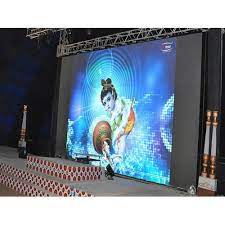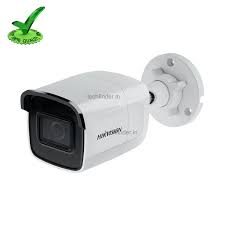LED Wall: Transforming Visual Experiences
In today’s digital age, visual displays have become an integral part of our daily lives. Whether it’s for advertising, entertainment, or informational purposes, having a captivating and dynamic display can make a significant impact. This is where LED walls come into play.
LED walls, also known as LED video walls or LED display screens, are revolutionizing the way we perceive visual content. These large-scale displays consist of an array of light-emitting diodes (LEDs) that work together to create stunning visuals with vibrant colors and exceptional clarity. From indoor venues like stadiums and concert halls to outdoor settings such as billboards and public spaces, LED walls are transforming the way we experience visual content.
One of the key advantages of LED walls is their flexibility in terms of size and shape. These displays can be customized to fit any space, allowing for seamless integration into various environments. Whether you need a small screen for a retail store or a massive display for a sports arena, LED walls can be tailored to meet your specific requirements.
The high brightness levels offered by LED walls ensure excellent visibility even in well-lit areas or under direct sunlight. This makes them ideal for outdoor advertising where traditional billboards may struggle to deliver clear messages in challenging lighting conditions. With LED walls, advertisers can captivate their target audience with eye-catching visuals that grab attention and convey messages effectively.
Furthermore, LED walls offer exceptional image quality with wide viewing angles. This means that viewers can enjoy crystal-clear visuals from almost any angle without experiencing distortion or color fading. Whether you’re sitting directly in front of the screen or viewing it from the side, you’ll still be able to appreciate the full depth and richness of the displayed content.
LED walls are also highly versatile when it comes to content management. With advanced software and control systems, users can easily manage and schedule different types of content on their displays. This allows for dynamic advertising campaigns, interactive presentations, and even live video streaming. LED walls provide the flexibility to adapt and update content in real-time, ensuring that your message is always relevant and impactful.
Moreover, LED walls are energy-efficient compared to traditional display technologies. LEDs consume less power while delivering superior brightness and image quality. This not only helps reduce operational costs but also contributes to a more sustainable environment.
As technology continues to advance, LED walls are becoming increasingly popular across various industries. From retail and hospitality to entertainment and corporate sectors, businesses are embracing the transformative power of LED walls to engage their audiences and create unforgettable visual experiences.
In conclusion, LED walls have revolutionized the way we perceive visual content by providing stunning visuals with vibrant colors, exceptional clarity, and flexibility in size and shape. With their high brightness levels, wide viewing angles, easy content management capabilities, and energy efficiency, LED walls are transforming advertising campaigns, enhancing entertainment experiences, and captivating audiences worldwide. As this technology continues to evolve, we can only imagine the limitless possibilities that lie ahead for LED walls in creating immersive visual experiences.
Frequently Asked Questions About LED Walls in India
- What is the price of 2×2 video wall in India?
- How much does an LED wall cost?
- What is LED wall used for?
- How to build a LED wall?
What is the price of 2×2 video wall in India?
The price of a 2×2 video wall in India can vary depending on several factors such as the brand, specifications, features, and additional accessories. Generally, the cost of a basic 2×2 video wall configuration with standard LED panels can range from INR 1,50,000 to INR 5,00,000 or more. However, it’s important to note that prices are subject to change and it’s recommended to check with specific vendors or suppliers for accurate and up-to-date pricing information.
How much does an LED wall cost?
The cost of an LED wall can vary significantly depending on several factors such as the size, resolution, brand, and additional features. Generally, LED walls are priced based on the square footage or square meter of the display area.
For smaller indoor LED walls, prices can range from a few hundred dollars per square foot to a few thousand dollars per square foot. These displays typically have lower resolutions and are suitable for applications such as retail stores or conference rooms.
For larger outdoor LED walls used in stadiums, concert venues, or advertising billboards, the cost can be significantly higher. These displays require higher resolutions and brightness levels to ensure visibility in various lighting conditions. Prices for outdoor LED walls can range from several thousand dollars per square meter to tens of thousands of dollars per square meter.
It’s important to note that the cost of an LED wall doesn’t only include the hardware itself but also factors in installation, maintenance, and any additional components such as controllers or content management systems. These additional costs should be considered when budgeting for an LED wall project.
It’s recommended to consult with reputable suppliers or manufacturers who specialize in LED walls to get accurate pricing information based on your specific requirements. They will be able to provide you with a detailed quote based on factors like size, resolution, and any customization options you may need.
What is LED wall used for?
LED walls have a wide range of applications across various industries. Some common uses of LED walls include:
- Advertising and Marketing: LED walls are commonly used for outdoor advertising on billboards, building facades, and digital signage. Their high brightness levels and vibrant colors make them highly effective in grabbing attention and conveying messages.
- Events and Entertainment: LED walls are popular in event venues, stadiums, concert halls, and theaters for displaying live video feeds, stage backdrops, and immersive visual effects during concerts, sports events, theater performances, and other live shows.
- Retail Environments: LED walls are utilized in retail stores to create visually appealing displays for showcasing products or promoting special offers. They can also be used to enhance the overall ambiance of the store.
- Control Rooms: LED walls find applications in control rooms such as those used by security agencies or transportation authorities to monitor surveillance footage, manage traffic flow, or display critical information in real-time.
- Corporate Presentations: LED walls are increasingly being used in corporate settings for presentations during conferences, trade shows, product launches, or corporate events. They provide a visually stunning backdrop that helps engage the audience effectively.
- Sports Arenas: LED walls are commonly installed in sports arenas to display live scores, player statistics, instant replays, advertisements, and other dynamic content that enhances the spectator experience.
- Education and Training: LED walls are utilized in educational institutions as interactive teaching tools or for displaying educational content such as diagrams or videos to enhance the learning experience.
- Hospitality Industry: In hotels and resorts, LED walls can be used as digital signage to provide guests with information about amenities, promotions, events happening within the property or nearby attractions.
- Command Centers: Government agencies or emergency response teams use LED walls in command centers to monitor critical data feeds like weather updates, emergency alerts or coordinate responses during crisis situations.
- Museums and Exhibitions: LED walls are used in museums and exhibitions to create immersive displays that showcase artwork, historical artifacts, or interactive exhibits.
These are just a few examples of the diverse applications of LED walls. The versatility and visual impact of LED walls make them an increasingly popular choice for businesses and organizations looking to create captivating visual experiences.
How to build a LED wall?
Building an LED wall requires careful planning, technical knowledge, and the right equipment. Here is a general step-by-step guide on how to build a basic LED wall:
- Determine the Purpose and Size: Decide on the purpose of your LED wall, whether it’s for advertising, entertainment, or informational purposes. Determine the size of the wall based on the available space and viewing distance.
- Calculate Pixel Pitch: Pixel pitch refers to the distance between each pixel on the LED display. It determines the resolution and image clarity of the wall. Calculate the pixel pitch based on viewing distance and desired image quality.
- Choose LED Modules: Select LED modules that match your desired pixel pitch and resolution. Consider factors such as brightness, color reproduction, and durability.
- Design Frame Structure: Create a frame structure to hold the LED modules securely in place. The frame should be sturdy enough to support the weight of the modules and withstand environmental conditions if it’s an outdoor installation.
- Install Power Supply: Connect a stable power supply system to provide electricity to each LED module. Ensure that it meets safety standards and can handle the power requirements of your LED wall.
- Connect Control System: Install a control system that allows you to manage and control content displayed on your LED wall. This includes video processors, sending cards, receiving cards, and cables for data transmission.
- Mount LED Modules: Carefully mount each LED module onto the frame structure according to manufacturer instructions. Ensure proper alignment and spacing between modules for seamless visuals.
- Test Functionality: Before finalizing installation, thoroughly test each module for functionality, color consistency, brightness levels, and any potential defects or dead pixels.
- Calibrate Display Settings: Adjust display settings such as brightness, contrast, color temperature, gamma correction, and refresh rate using calibration software provided by the manufacturer.
- Content Management System (CMS): Set up a content management system that allows you to easily upload, schedule, and manage content on your LED wall. This can be done through specialized software or integrated CMS solutions.
- Maintenance and Monitoring: Regularly inspect and maintain your LED wall to ensure optimal performance. Monitor temperature levels, power consumption, and any signs of damage or malfunction.
It’s important to note that building an LED wall can vary in complexity depending on the size, resolution, and specific requirements of your project. It’s recommended to consult with professionals or experienced technicians for a more detailed and customized approach based on your needs.




